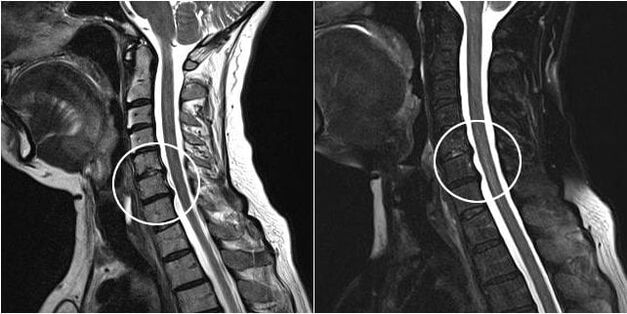
Cervical osteochondrosis is diagnosed in women more often than in men. And this is not only due to the strength of the lower ligament tendon apparatus, the weakness of the muscular corset. Throughout her life, a woman’s body is subject to fluctuations in hormone levels, which can affect the condition of cartilage and bone tissue. But the methods of conservative treatment and surgery of cervical osteochondrosis in both sexes are practically no different.
Characteristics of female osteochondrosis
Osteochondrosis of the cervical spine in women develops and proceeds according to the same scenario as in men. Intervertebral discs lose their ability to retain moisture, begin to slowly collapse, involve the structure of bones, ligaments, tendons in a destructive process. But due to weak neck muscles, more fragile vertebral segments, the first symptoms of the disease in women appear more quickly. Already in the early stages of development, there may be significant discomfort that limits mobility.
It should be noted lower stress resistance for women of any age. After learning about the impossibility of curing osteochondrosis completely, they can bring themselves into a state of depression with experience. Therefore, antidepressants, antipsychotics, sedatives, and sedatives are often included in therapeutic regimens.
Causes of disease in women
The main cause of more frequent damage to the intervertebral disc in women is a decrease or increase in hormone levels in the body. After the onset of natural menopause, estrogen production, which is involved in the regulation of cartilage and bone tissue biosynthesis, gradually decreases. Decreased estrogen levels in menopause lead to damage to the discs, triggering the development of osteoporosis (increased bone fragility).
Women monitor their weight, so they often reject foods high in calcium - sour cream, cheese, nuts, soybeans, nuts. And if the diet is followed, not only weight loss, but also a lack of the most important trace elements and vitamins occurs, which leads to premature destruction of the intervertebral disc.
symptoms
At the first x-ray stage, the signs of osteochondrosis are weakly expressed. Only the uneven surface of the intervertebral disc was observed. Therefore, a woman only feels a slight discomfort in the neck that occurs after doing physical exercise or staying long in a position with her head down. But gradually the intensity of the pain increased. It is visible not only when turning and tilting the head, but also when resting. In the absence of medical intervention, the pathology progresses. As a result of violations by osteophytes, vertebral artery displacement discs, the following clinical manifestations occur:
- jumps in blood pressure;
- headache (cervical migraine), dizziness, pre-fainting;
- decreased visual and auditory acuity, double vision of objects in front of the eyes, tinnitus;
- fatigue, apathy, sleep disturbances;
- tickling, "coma" in the throat.
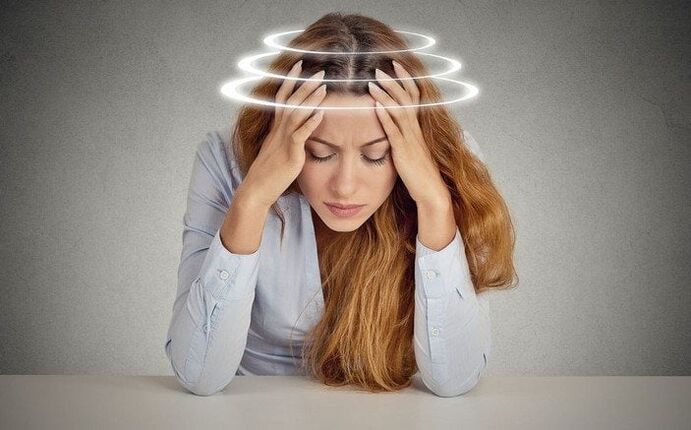
Also, when tilting or turning the head, a buzzing sound is heard, and mobility of the cervical area is limited.
Pathological diagnosis
The primary diagnosis can be made based on external examination, patient complaints, and the results of several functional tests to assess range of motion, reflexes, and sensitivity. To confirm this, radiographs were performed in 2 projections. This study is informative not only for the detection of osteochondrosis, but also to determine its stage, degree of damage to the discs and vertebrae. Discography allows to accurately examine the affected intervertebral disc, and if there is a suspicion of damage to the nerve pathways, the patient is shown electrophysiological diagnostics:
- arouse potential;
- electroneurography;
- electromyography.
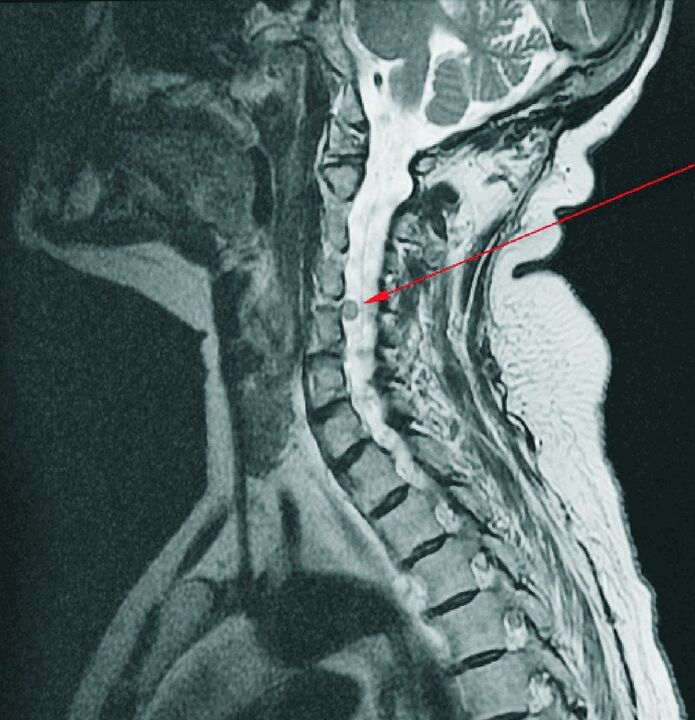
CT, MRI serves as an additional diagnostic method, often used to assess the condition of the spinal cord, detect complications - protrusions or intervertebral hernias. This study was conducted to distinguish cervical osteochondrosis from tuberculous spondylitis, osteomyelitis, benign and malignant neoplasms, ankylosing spondylitis, rheumatism.
First aid for exacerbations
During recurrent cervical osteochondrosis, there is severe pain in the neck so that the woman is afraid to turn or tilt her head. To reduce its intensity, lie on a hard surface. It is necessary to take a body position where the pain is reduced. If, on a doctor’s recommendation, a Shants collar or semi -rigid bandage has been purchased, then it must be worn while on the move.
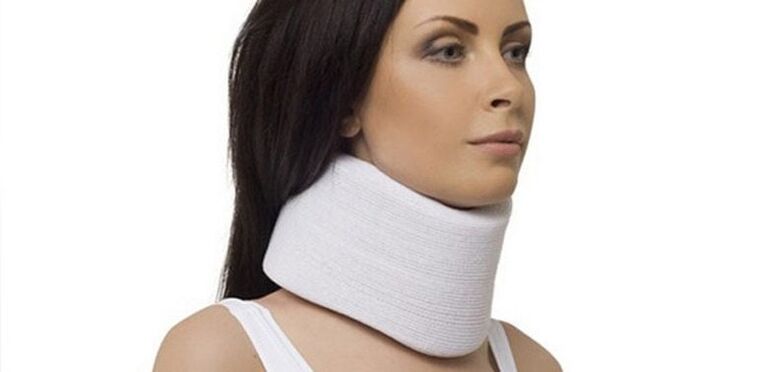
To stop the onset of pain will allow taking tablets of any non-steroidal anti-inflammatory drugs (NSAIDs). Ointments and gels with NSAIDs have a pronounced analgesic effect.
When giving first aid, the use of cold or heat is undesirable. Often, relapses occur due to muscle spasms, and cold compresses will only increase skeletal muscle tension. Dry warming is an effective way to eliminate symptoms, but only if there is no inflammatory process in the soft tissues of the neck.
How to treat cervical osteochondrosis in women
Osteochondrosis of any localization is still not completely cured. A neurologist or vertebrologist will certainly explain to the woman the meaning and principles of the upcoming therapy. Treatment aims to achieve a stable level of remission. At this stage, any painful sensations occur very rarely, and the range of motion is fully preserved.

It is impossible to be limited only to taking medication, because the means of restoring the discs and vertebrae have not been synthesized. It is necessary to follow all doctor's prescriptions - attend physiotherapy, massage activities, exercise therapy and gymnastics.
From the first day of treatment, patients are recommended to wear a Shants collar - an orthopedic device that stabilizes the discs and vertebrae. They prevent displacement of vertebral structures, thus reducing the likelihood of recurrence.
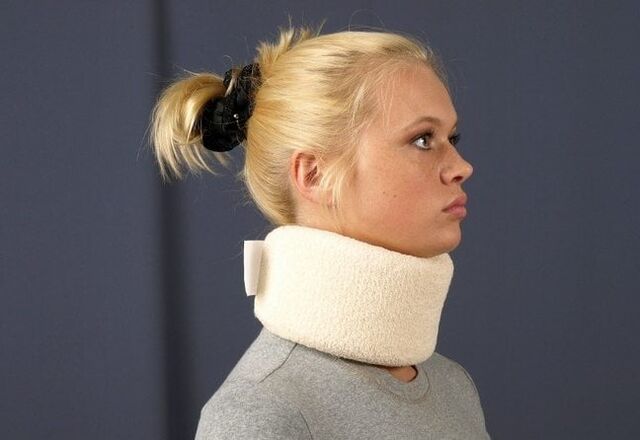
Overview of drugs for treatment
Sometimes during an exacerbation of cervical osteochondrosis, a burning, piercing sensation occurs as a result of violation of the spinal roots. They can be eliminated only by intramuscular administration of NSAID solutions. And if they are not effective, drug restrictions with anesthetics and hormonal agents are used. Glucocorticosteroids are not always used because of their negative effects on internal organs, cartilage, and bone tissue.
To relieve severe pain, a woman will be allowed to take NSAIDs in tablet or capsule form. Non -steroidal agents in the form of gels and ointments are prescribed for mild pain, as well as to reduce the dose of systemic medications.
| A group of drugs for the treatment of cervical osteochondrosis | Therapeutic action |
|---|---|
| Chondroprotectors | Restores part of the cartilaginous tissue of the intervertebral disc |
| Means that increase blood circulation | Eliminates lack of oxygen and nutrients, stimulates regrowth |
| vitamin B | Normalizes the transmission of impulses to the central, peripheral nervous system |
| Relax your muscles | Relax skeletal muscles, relieve muscle cramps |
| Warming ointment | Accelerates blood circulation, has analgesic, anti-exudative effect |
| Antidepressants, sedatives, sedatives | Relieves increased anxiety, restlessness, sleep disturbances |
Therapeutic exercise, gymnastics, exercise
The most effective way to treat osteochondrosis is daily exercise therapy. With the help of a dose load on the cervical spine, the muscular corset is strengthened, the tissue blood supply with nutrients is improved, and the risk of deterioration is reduced. It is necessary to start gymnastics immediately after stopping the acute pain. The exercise therapist devises a set of exercises individually for a woman, taking into account her physical fitness and the severity of the pathology. All movements are performed smoothly, with small amplitude. This will strengthen the muscles without damaging the cartilage tissue. What exercises do physiotherapists recommend:
- sit up straight, put your hands under your chin. Try tilting your head, resisting with a brush;
- in a sitting position, place your hands on your cheeks. Tilt your head to the side, hold with a brush;
- stand up, put your hands on your belt. Turn your head first in one direction, then in the other, without much throwing it backwards.
With osteochondrosis, patients are recommended swimming, yoga, Pilates, water aerobics, Nordic walking. Cycling, running, weight lifting are prohibited.
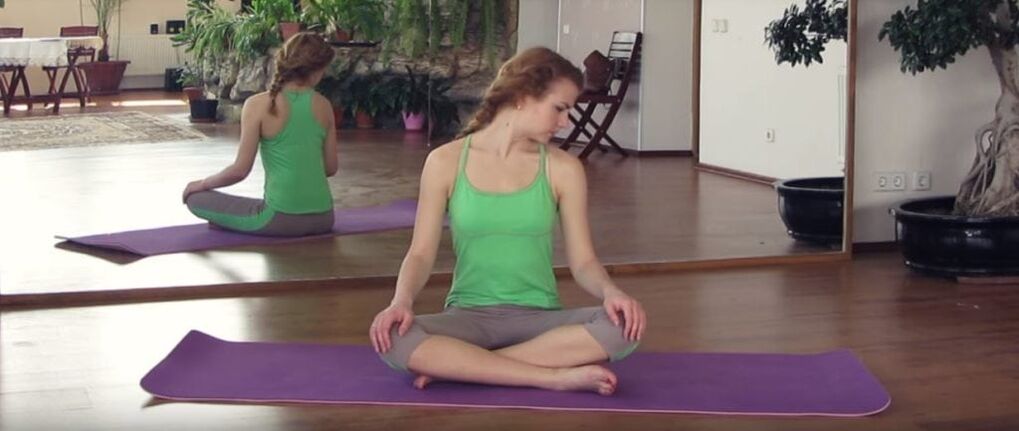
Nutrition and diet
With cervical osteochondrosis, nutritionists recommend limiting the consumption of strong alcohol, coffee, and tea. This drink interferes with the absorption of calcium, quickly flushing it out of the body. Preference should be given to lightly salted mineral water, fruit compote and jelly, vegetable juices, berry drinks. The optimal amount of fluid to drink is 2-2. 5 liters a day.
It is necessary to abandon fast food, semi -finished products, smoked meats, fatty meats. The daily diet menu should consist of fresh fruits and vegetables, whole grain cereals, white bread or dried rye, and fermented dairy products. Useful turkey, chicken breast, rabbit meat, lamb. 2-3 times a week you should eat some oily fish, such as salmon or Norwegian herring.
It is better to completely abandon fried foods. The most useful products are baked in foil, boiled in water or steamed.
Physiotherapy
At the recovery stage, patients are given 5-10 sessions of physiotherapy. Electrophoresis or ultrafonforesis with chondroprotectors, calcium saline solutions, B group vitamins is performed to restore cartilage tissue, improve preservation, and increase the strength of the ligament tendon apparatus. The same procedure, but only with glucocorticosteroids, analgesics, anesthetics in the subacute period, aims to relieve pain and inflammation.
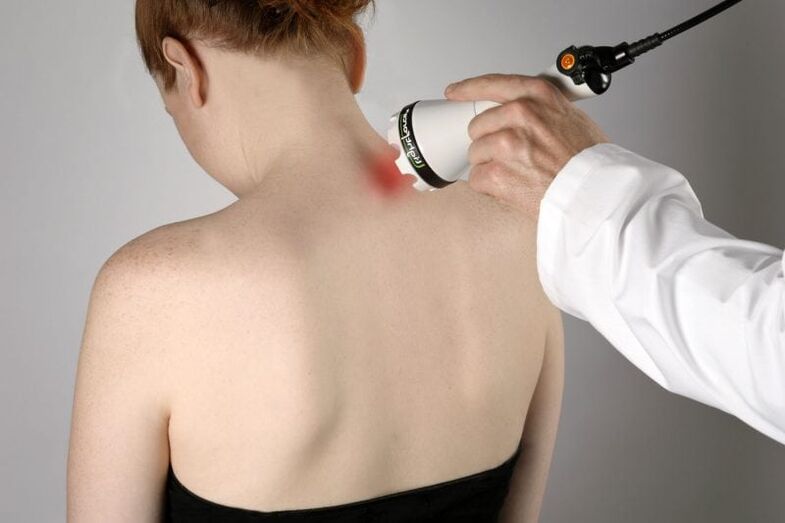
The following physiotherapy procedures can also improve women's well -being:
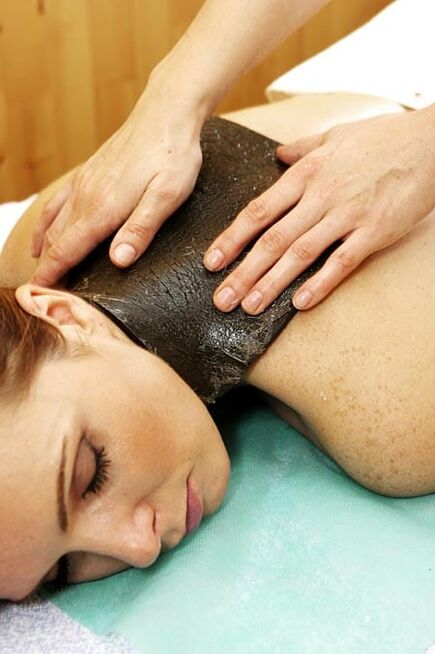
- UHF therapy;
- magnetotherapy;
- galvanic current;
- laser therapy;
- shock wave therapy.
Applications with ozokerite, bischofite, paraffin are used. The use of therapeutic mud and mineral water, fixation of medical leeches has proven itself well in the treatment of cervical osteochondrosis.
Sort
During the massage, mechanical effects are made on the muscles of the entire back, and not just the cervical area. But it is on them that experts pay special attention. As a result of kneading, smoothing, performing pressing and chopping movements, skeletal muscle spasms relax, ligaments strengthen, and blood circulation improves. In the treatment of osteochondrosis, the following types of manual massage and hardware are used:
- classic;
- point;
- vacuum;
- Sweden;
- segmented.
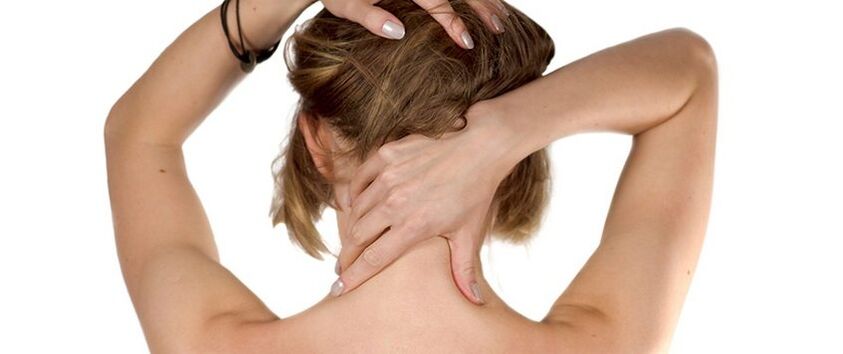
Pharmacies and medical equipment stores sell manual electric massage tools. They are equipped with special nozzles, speed controllers. And the comfortable long handle of the device allows you to massage the back of the neck freely.
Restoration of the people
In folk medicine, for the treatment of osteochondrosis, homemade ointments, alcohol and rubbing oils, compresses, decoctions, and tinctures are used. Official medical representatives are skeptical about such a method of therapy for degenerative-dystrophic pathology due to its low clinical efficacy. The exception is herbal teas from chamomile, St. John's wort. John, rose hip absorption.

Characteristics of the treatment of older women
Therapy of older patients is carried out using the same techniques as the treatment of young women. But when determining the dosage regimen, neurologists take into account the presence of chronic pathology in the elderly, a decrease in functional activity of the liver, kidneys, and gastrointestinal tract. Doctors choose drugs, their use has a mild effect on internal organs, and the risk of adverse reactions is reduced.
Is cervical osteochondrosis dangerous
The main signs of cervical osteochondrosis are similar in both sexes. But neurological symptoms are more pronounced in women. They are more often diagnosed with violations of the spinal roots and vertebral arteries, which supply the brain with nutrients.
With cervical osteochondrosis of 2nd and 3rd severity, often the roots of the spine are violated, leading to the appearance of acute pain, loss of reflexes, and decreased sensitivity. Severe pathological complications are intervertebral hernia, radicular syndrome, discogenic myelopathy.
Precautions
In women who prefer narrow shoes with high heels, cervical osteochondrosis is often detected. When wearing it, the load on the spinal column is unevenly distributed, leading to microtrauma of cartilaginous tissue. Women also often experience hypothermia, they experience regular domestic conflicts. And these factors are prerequisites for the development of pathology. Thus, their exclusion from the normal way of life becomes an excellent prevention of osteochondrosis from any localization and its consequences.


























